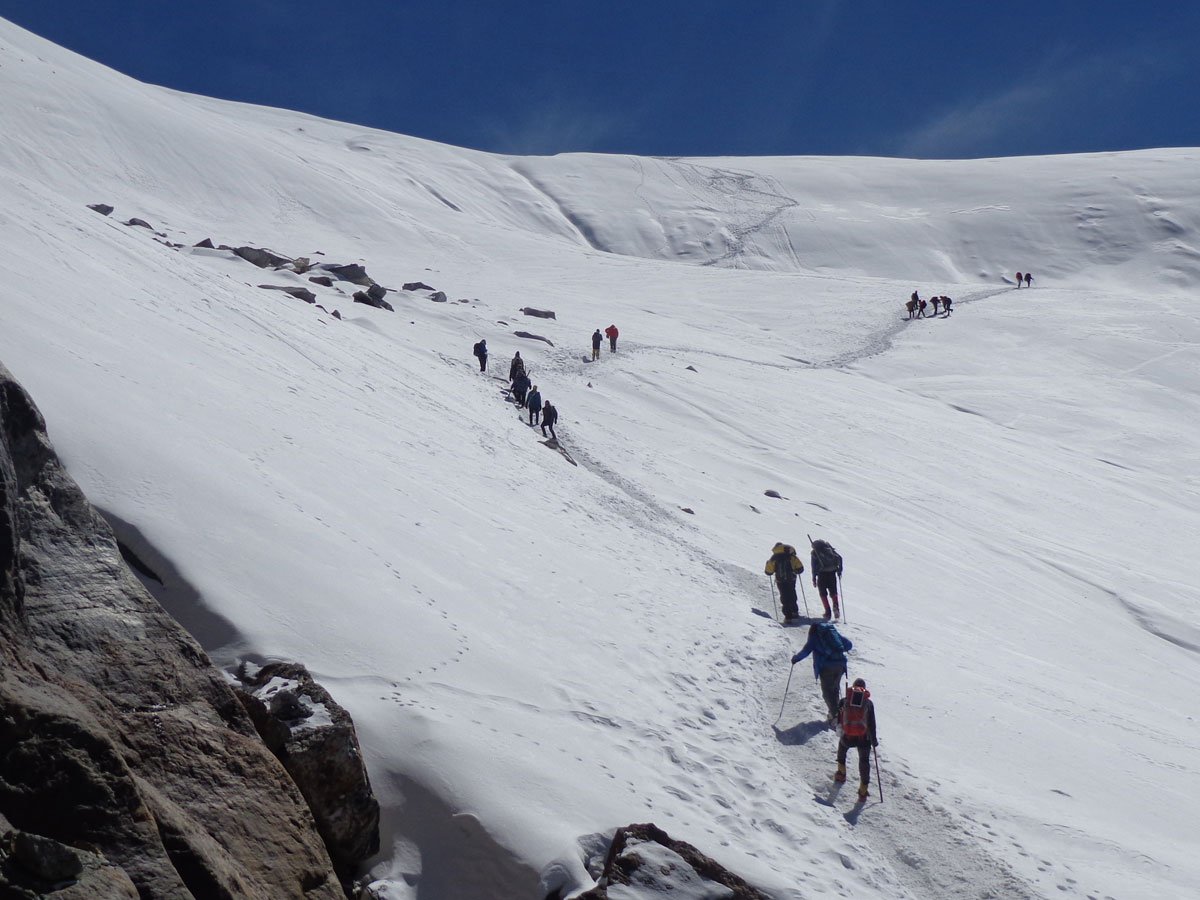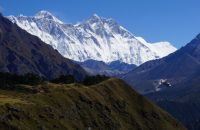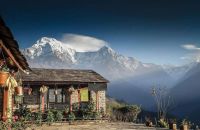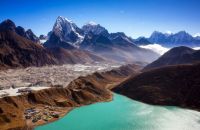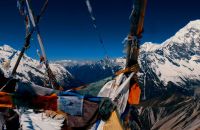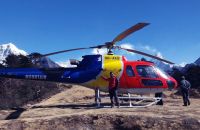Talk with our local travel specialist who can help organize your trip.
Expert Tips for Successful Peak Climbing in Nepal
Peak climbing in Nepal is a popular adventure activity that allows climbers to summit smaller peaks less than 7000 meters high. Nepal has a wide range of peaks for climbers of all levels, from beginner to advanced. Mera, Island, Lobuche, Pisang, and Yala are famous peaks for climbing in Nepal.
Here are some expert tips for successful peak climbing in Nepal that will help to make your climbing dreams a reality and create unforgettable memories.
Do the Research and Preparation
Climbing a peak in Nepal can be an enriching experience, but it's essential to be prepared and research before attempting such a feat. You must choose the peak that best suits your skill level and experience. Before attempting a peak climb in Nepal, you need to research the climbing route.
Explore the difficulty level, altitude, climbing durations, and any technical requirements of the peak you're considering. In this way, you'll be better prepared and equipped to handle the challenges and risks of high-altitude climbing.
Physical and Mental Preparation
Physical preparation is vital for peak climbing in Nepal. It includes cardiovascular exercise, strength, and altitude training. You need to build cardiovascular fitness to cope with the physical demands of climbing at high altitudes. Exercise such as running, cycling, or swimming into your training regimen will help to build your stamina.
Moreover, strength training will help you develop the muscles to support your body weight during the climb. Focus on exercises that target your legs, core, and upper body, like squats, lunges, push-ups, and pull-ups. Since the peaks in Nepal are at high altitudes, altitude training is essential to train your body to adapt to reduced oxygen levels. You can use an altitude training mask or go hiking at higher altitudes.
Climbing a peak requires lots of mental strength and endurance. Visualization can be a valuable tool for preparing for Nepal's peak climbing. You can practice mindfulness, meditation, or breathing techniques to help manage stress, anxiety, and fear. Confidence is vital to successfully summiting a peak.
Key Notes:
Third Rock Adventures offers various climbing expedition packages with an experienced guide. We help our clients to undergo proper training and acclimatization before attempting any peak climb. Contact us today to get expert guidance from our professional guides.
Essential Preparation for Peak Climbing in Nepal: Clothing, Gear, and Equipments

Peak climbing in Nepal is a popular activity among adventure seekers, and it requires specific gear and equipment to ascertain a safe and successful climb. Here are some essential items to consider bringing on a peak climbing expedition in Nepal:
Clothing
Layered clothing is essential for regulating body temperature, and it's important to bring clothing suitable for a wide range of temperatures and weather conditions. This includes base layers, insulating layers, waterproof and windproof jackets and pants, gloves, hats, and warm socks.
High-Altitude Gear
As many peaks in Nepal are over 5,000 meters, high-altitude gear such as down jackets, thermal pants, and high-altitude climbing boots are necessary to protect against the extreme cold. Also, crampons attached to your boots will provide traction on icy or hard-packed snow.
Climbing Gears
A sturdy pair of mountaineering boots with good ankle support, insulation, and water resistance are a must-have for any peak climbing expedition in Nepal. Likewise, a climbing helmet, harness, ice axe, and rope are essential for safety on technical climbing routes.
Climbing Protection: Carabiners, quickdraws, and other climbing protection devices are necessary to attach yourself to the rope and secure yourself to anchors.
Backpack
A good backpack with at least 50 liters capacity is essential for carrying all your gear and supplies.
Navigation Tools: A map, compass, and GPS device can help you navigate your way to the summit and back safely.
Climbing Permit
Before embarking on any peak climbing expedition in Nepal you need to obtain a climbing permit from the Nepal Mountaineering Association (NMA).
To make it even easier for you, we put together a comprehensive Packing list for peak climbing in Nepal with all tips regarding equipment to help you prepare for your peak climb.
Key Notes
Third Rock Adventures provides most of the camping equipment needed and helps rent additional gear like a sleeping bag, down jacket, and water bottles. Get in touch with us to find out more.
Featured Trips
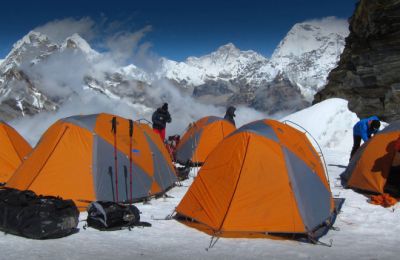
Mera Peak Climbing - 18 days
Mera Peak is a high-altitude, fascinating climbing peak in the Solu Khumbu region of Nepal. Mera Peak Climbing is an easy, non-technical climb, ideal for novice climbers who wish to climb their first mountain in Nepal and best for professional as well as non-experienced climbers.
Inquire Now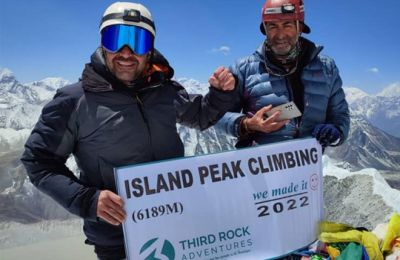
Island Peak Climbing - 15 days
Island Peak Climbing takes you to Nepal’s popular peak in the Everest region. Loved by novice as well as experienced climbers, the mountain offers you the ideal conditions to hone your climbing skills.
Inquire NowWhere to travel next?
Get help from our travel specialists for holiday ideas that matches your interests.
Learn about Altitude and Acclimatization

Understanding altitude and acclimatization can help you adequately prepare for peak climbing in Nepal. Altitude sickness, also known as Acute Mountain Sickness (AMS), is a potentially life-threatening condition that can occur when climbing at high altitudes. So, it is crucial to comprehend how altitude sickness can affect your body and how to prevent and treat it.
So here are some ways AMS can affect climbers while ascending the peak:
- Headaches
- Nausea and vomiting
- Dizziness and lightheadedness
- Shortness of breath
- Swelling
- Fatigue and weakness
- Loss of coordination
- Confusion and disorientation
- High altitude pulmonary edema (HAPE)
- High altitude cerebral edema (HACE)
Thus, acclimatization is essential during peak climbing as it reduces the risk of altitude sickness, improves physical performance, provides better sleep, and increases safety. It can enhance your overall peak climbing experience by allowing you to enjoy the scenery and the experience without the discomfort and risks of altitude sickness.
Further, you can follow several acclimatization techniques such as gradual ascent, staying well-hydrated, proper nutrition, medication like Diamox, climbing high-sleeping low, controlled breathing exercises, etc. You can even go for short hikes at higher altitudes to help the body adapt to higher elevations gradually. And most importantly, getting enough rest and sleep during acclimatization is crucial as it helps the body recover from the physical exertion of peak climbing.
Essential Climbing Techniques and Safety Measures
Peak climbing in Nepal requires some basic climbing techniques you should be familiar with before embarking on your trip. Here are some of the important climbing techniques that you should know:
Roping up
You must tie yourself to your fellow climbers using a rope. This ensures that if one climber falls, the other can stop the fall and prevent serious injury.
Walking with crampons
Crampons are a type of traction device worn on boots to provide additional grip on the snow and ice. Walking with crampons requires a specific technique involving keeping your feet apart and taking small steps to maintain balance.
Self-arrest
Self-arrest is the technique of stopping a fall by digging the spike of your ice axe into the snow or ice. This technique is significant for preventing serious injury in case of a fall.
Climbing knots
Climbing knots help to secure ropes, tie yourself to anchors, and tie into a rope. Learning to tie basic climbing knots, such as the figure-eight knot and the clove hitch, will be helpful.
Belaying
Belaying is the technique of controlling the rope to protect your fellow climbers in case of a fall. Learning how to belay correctly is essential for the safety of your fellow climbers.
Undoubtedly, peak climbing is an arduous and risky activity. Proper safety measures and precautions are essential for a successful climb. Here are some necessary safety measures and precautions to follow:
- Keep yourself updated with current weather situations, like potential hazards, such as avalanches, rockfalls, and crevasses.
- Staying hydrated and eating properly is essential to maintain your energy levels.
- Dress appropriately for the weather conditions and altitude.
- Use proper climbing equipment, such as ropes, harnesses, ice axes, and crampons.
- Follow proper climbing techniques, such as roping up, self-arrest, and anchoring.
- Carry a first aid kit and know how to use it in an emergency.
Key Notes
You need to follow the above-mentioned safety measures and precautions, listen to the guide's advice, and use common sense to ensure a safe peak climb. Also, effective communication and emergency protocols are vital for Nepal's peak climbing.
Hire a Guide and Porter

Hiring a guide or porter is highly recommended for peak climbing in Nepal to ascertain your safety, provide local knowledge and logistic support, and promote responsible tourism. Here are some excellent reasons for hiring a guide and porter for peak climbing:
Safety
Climbing peaks in Nepal can be dangerous, especially for those inexperienced or unfamiliar with the terrain. Experienced guides can provide valuable assistance and guidance to ensure your safety during the climb. They can also identify potential hazards and help you avoid them.
Local Knowledge
Hiring local guides and porters not only supports the local economy but also allows you to learn more about the local culture and environment. They are familiar with the local terrain, culture, and customs. Thus, they can provide valuable insights and information about the area.
Physical support
Climbing peaks in Nepal can be physically demanding, especially at high altitudes. Porters can help carry your equipment, food, and water, which can help reduce your physical load and make the climb more manageable.
Logistics
Peak climbing in Nepal involves a lot of logistics, including transportation, accommodation, and equipment. Guides and porters can handle these logistics, making your trip smoother and less stressful.
Navigation
Guides can help you navigate the route and check whether you are on the correct path. This is especially important in areas where the trails are not well-marked or where there are multiple routes.
Here are some expert tips for choosing reliable and experienced guides and porters for your peak climbing trip in Nepal:
- Look for licensed and certified guides and porters.
- Check reviews and references from previous clients who have climbed peaks in Nepal.
- Check insurance coverage.
- Consider their language proficiency.
- Clarify the roles and responsibilities of guides and porters during the trip.
- Discuss fees and payment terms with the agency beforehand.
Likewise, a guide and porter are essential to the success and safety of your peak climbing trip in Nepal. Treat them with respect and appreciation, and follow these etiquette and treatment tips:
- Respect their expertise and listen to their advice.
- Communicate your expeditions clearly to your guide and porter.
- Be considerate of your guide and porter's physical and emotional well-being.
- Show appreciation for your guide and porter's hard work and dedication.
Key Notes
We provides a professional guide with the experience and qualifications to ensure a safe and successful climb. We also assist with arranging the necessary permits and accommodation for the climb. Contact us now to learn more and book your climb.
Featured Trips
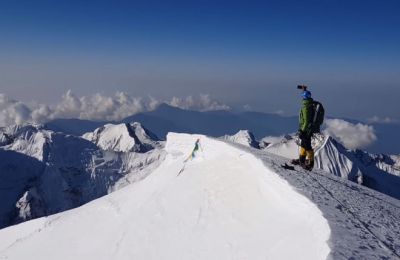
Mera Peak and Island Peak Climbing - 24 days
Mera Peak and Island Peak climbing is a trip to Nepal climb two peaks above 6000 meters in a single trip. Both Climbing adventure which lasts for 24 days will challenge you to the fullest.
Inquire Now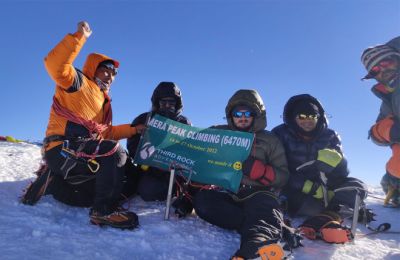
Island and Mera Peak Climbing with EBC Trek - 27 days
Island and Mera Peak Climbing with EBC Trek requires technical climbing skills, This trip is a right fit for novice climbers who want to level up their experience and progress to a bigger peak.
Inquire NowWhere to travel next?
Get help from our travel specialists for holiday ideas that matches your interests.
Responsible Travel: Cultural Sensitivity and Environmental Awareness
Peak climbing in Nepal is not only about reaching the summit but also about respecting the local culture and environment. During the trip, respect local customs and traditions, like removing your shoes before entering a temple or monastery. Also, dress appropriately to avoid offending the locals. You can learn basic Nepali phrases such as greetings and thank you.
Moreover, follow the principles of Leave No Trace and minimize your waste. Also, to reduce your carbon footprint and support sustainable development in the area, you can use renewable energy sources like solar panels or hydroelectric power. Consider supporting conservation efforts by donating to local organizations that protect the environment and wildlife.
Key Notes
We works closely with local communities to ensure our services are sustainable and beneficial to the local economy.
Final Say
Each peak climb in Nepal has its own unique challenges. Thus, by seeking out these expert tips for successful peak climbing in Nepal, you can better understand the climb you plan to undertake, increase your chances of success, and ensure your safety and well-being.
So, ready to summit the peaks of Nepal?
Don't wait; book your peak climbing expedition today and experience the adventure of a lifetime!
Contact us to learn more about our available packages and start planning your climb now. Let's conquer the mountains together!
- Written by: Sudina Manandhar
Updated: Apr, 24, 2023

